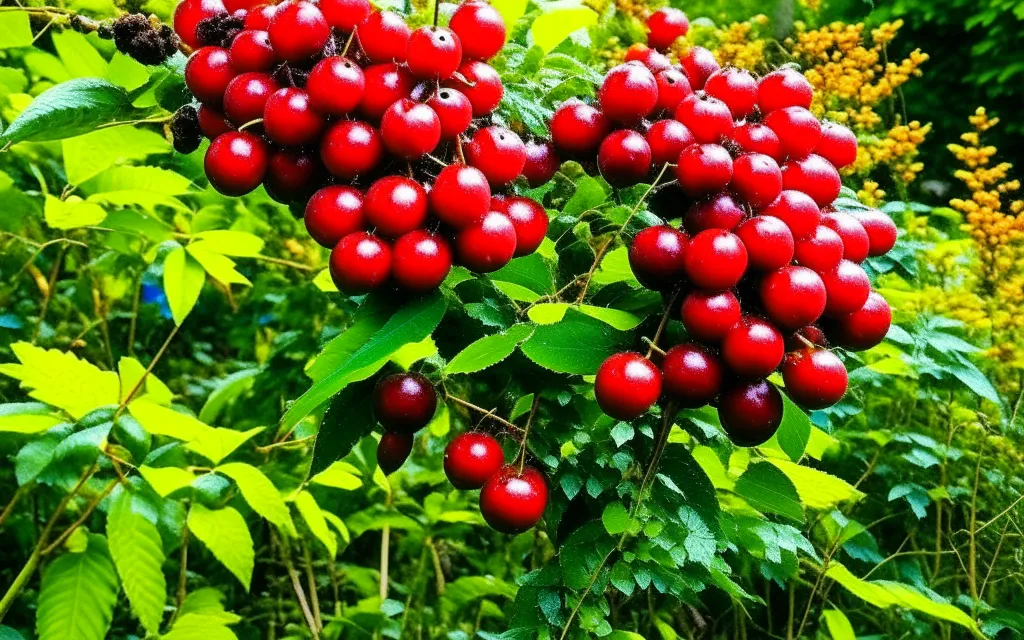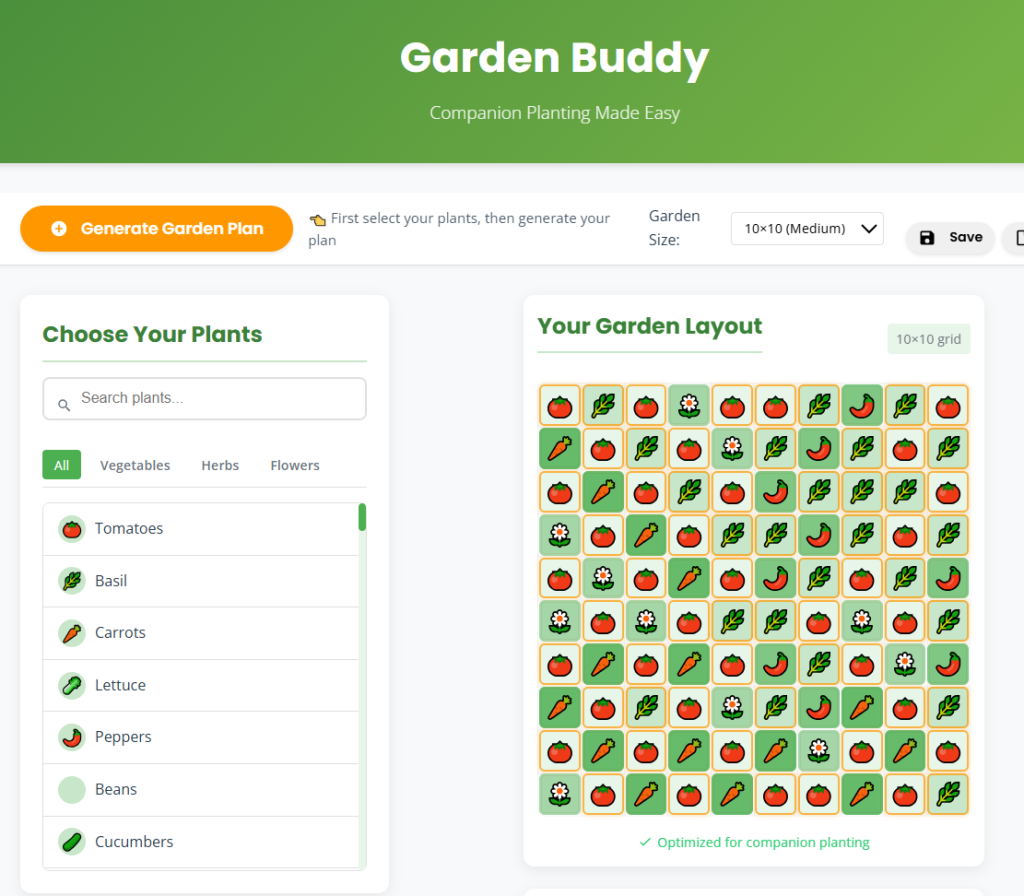
Growing Schisandra: A Gardener’s Delight
Hey there, fellow gardening enthusiasts! Today, I want to chat about a fantastic plant that’s been on my gardening radar: Schisandra. If you haven’t heard of it, it’s a unique berry-producing vine praised for its health benefits and delicious flavor. Let’s dig into what makes Schisandra special, how to grow it, and the benefits of companion planting. I promise, you’ll want to give this a go!
What is Schisandra and Its Growing Requirements?
Schisandra, often called the “five-flavor berry,” is native to the forests of northeast China and parts of Russia. This remarkable vine can thrive in USDA hardiness zones 4 to 9, preferring a spot with partial to full shade and well-draining soil rich in organic matter. I’ve found that keeping the soil consistently moist but not soggy yields the best results. Just make sure you give it something to climb on—it stretches out easily, reaching over 20 feet in height!
A Little History on Schisandra
This berry has been used in traditional Chinese medicine for thousands of years, valued for its adaptogenic properties. It’s said to boost energy, enhance skin health, and even support liver function. I first came across Schisandra in a gardening book, and I was instantly intrigued by its benefits and rich history.
Growing Schisandra: Techniques and Variants
When it comes to growing Schisandra, you can go vertical or let it sprawl out. A trellis or arbor is a great way to maximize space in your garden while adding visual interest. In my garden, I’ve trained it along a rustic wooden trellis, which looks charming and allows the vine to soak up more sunlight. You can also find several Schisandra varieties, including Schisandra chinensis and Schisandra sphenanthera. Chinensis is prized for its larger berries and higher flavor profile, while sphenanthera tends to be hardier and can withstand more extreme weather.
The Benefits of Companion Planting for Schisandra
Now, let’s dive into companion planting! You may ask, “What are the benefits of companion planting for Schisandra?” Well, planting certain species near your Schisandra can improve growth and promote a healthy ecosystem in your garden.
Good Companion Plants for Schisandra
Choosing the right companions makes all the difference. Here are some plants I’ve had great success with:
1. Fruit Trees
2. Berries
Plants to Avoid
Interestingly enough, when it comes to Schisandra, there are no specific plants to avoid. That said, it’s always good to keep different types of plants at a reasonable distance—about 3-6 feet—to prevent any competition for nutrients, moisture, or sunlight. This helps your Schisandra thrive without interference from its neighbors.
Final Thoughts
Growing Schisandra can be both rewarding and fun. Its unique flavor, health benefits, and beautiful vines make it an exciting addition to any garden. By pairing it with the right fruit trees and berries, you not only enhance its growth but also create a more diverse and vibrant garden ecosystem. So, grab your gardening gloves and give Schisandra a try—your taste buds will thank you!
Planting Guidelines for Companion Plants to Schisandra
Gardening can be such a rewarding pastime, especially when it comes to planting companion plants alongside Schisandra. If you’re like me, you cherish those delightful moments of tending to your garden and watching everything flourish together. In this post, I’m excited to share some specific spacing recommendations for companion plants that create a thriving ecosystem around your Schisandra. Let’s dig in!
A General Rule for Spacing Most Fruit Trees
When you’re planting fruit trees near Schisandra, a good rule of thumb is to give them at least 15 to 25 feet of space apart. This ensures they have enough room to spread their roots and grow lush. Some great fruit tree companions include:
Remember, adjusting the spacing based on your garden conditions and the particular size of the trees is key.
Berries from Schisandra
For berry plants, I typically recommend a spacing of 3 to 5 feet. This allows them to crowd in just a bit while still having the room to thrive. Here are a couple of berry companions:
Guidelines for Tall Companions
When it comes to taller companion plants, you’ll want a spacing of 4 to 6 feet apart. This helps ensure that they don’t overshadow your lovely Schisandra. Consider these tall beauties:
Guidelines for Low-Growing Companions
If you’re adding low-growing plants, spacing them about 1 to 2 feet apart works wonders. This gives ground cover while also providing a nice aesthetic. Try these:
Guidelines for Strongly Aromatic Companions
When pairing strongly aromatic plants, a spacing of 2 to 4 feet can be beneficial. They can help deter pests and bring delightful scents to your garden. Here are some aromatic friends:
Guidelines for Nutrient-Heavy Feeders
Nutrient-heavy feeders can be spaced about 2 to 3 feet apart. These plants often use a lot of soil nutrients, so ensure they’re getting enough space. Examples include:
Guidelines for Spreading or Vining Companions
For vining companions, aim for a spacing of 3 to 4 feet apart. This gives them the opportunity to climb without overwhelming your Schisandra. Here are a couple of great options:
Final Tips
Of course, adjust these distances based on your specific garden conditions and the mature sizes of the chosen companion plants. Taking into account sunlight, soil quality, and the overall layout of your garden can make all the difference in ensuring everything thrives.
Summary of Companion Plantings
Fruit Trees
Beyond Schisandra, fruit trees like apple and cherry can flourish with companions such as:
Berries
Alongside Schisandra, berry plants like blueberries and raspberries pair wonderfully with:
Gardening is about a community of plants growing together, and choosing the right companion plants can enhance the pleasure and productivity of your garden. I hope these guidelines inspire you to create a luscious garden with your Schisandra as the centerpiece! Happy planting!

Leave a Reply